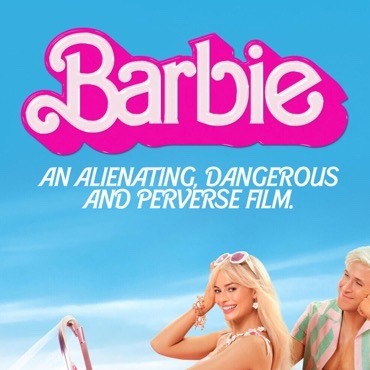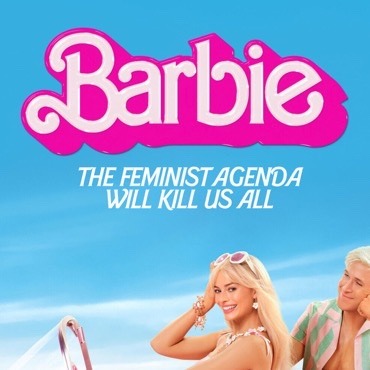#Kennings
Text
Thinking about making kennings
And I present to you:
THRONE-WALKER
Possibly the most badass one for wheelchair users I've ever come up with.
279 notes
·
View notes
Text
Kennings to Loki

Hail to the Bench-Mate of Óðinn and the Æsir
Hail to the Brother of Býleistr and of Helblindi,
Hail to the the Sly God,
Hail to the Visitor and Chest-Trapping of Geirrödr,
Hail to the Father of the Monster of Ván and of the Vast Monster, and of Hel, and Áli;
Hail to the Kinsman of Sleipnir
Hail to the Harmer of Sif's Hair
Hail to the Thief of the Giants, of the Goat, of the Brísingamen, and of Idunn's Apples;
Hail to the Husband of Sigyn,
Hail to the Slanderer and Cheat of the Gods,
Hail to the Contriver of Baldr's Death,
Hail to the Son of Fárbauti and Laufey, or of Nil,
Hail to the the Bound God
Hail to the Wrangling Foe of Heimdallr and of Skaði.

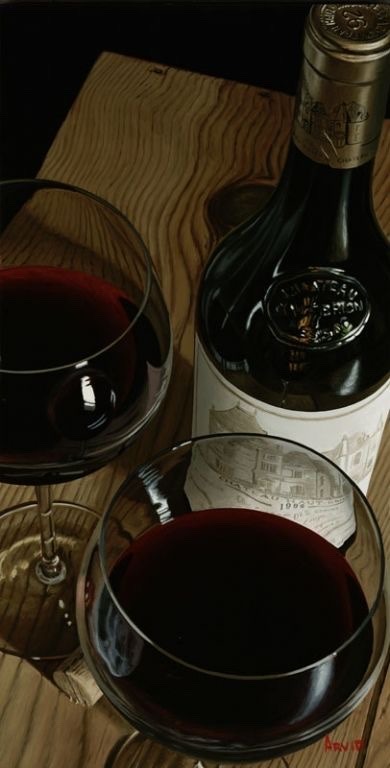
#prayer#heathenry#norse paganism#eddas#paganism#norse gods#deities#deity work#loki#spirituality#polytheism#norse polytheism#poem#kennings#prose edda
138 notes
·
View notes
Text
Heilsa!
Book I am reading early this morning is, The Poetic Edda by Snorri Sturluson, translated by Carolyne Larrington. I've read other translations as well; Jackson Crawford and also Lee Hollander, which aren't bad in any way, but so far I'm really enjoying Larrington's version. I recommend 💯 this read to all my fellow heathens because this version is very easy to follow, has both Old Norse and English translations.
“godt nytt år!” (Happy New Year)
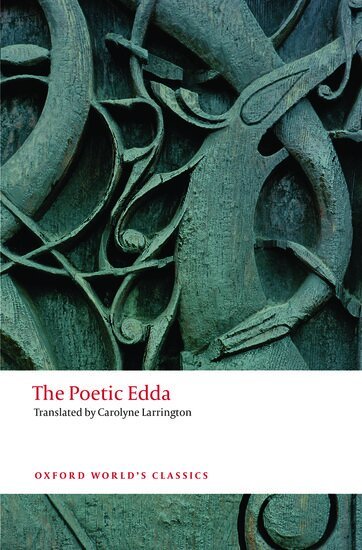
#norse#heathen#pagan#paganism#Snorri Sturluson#the poetic edda#norsegods#norse myths#codex regius#asatru#norsepagan#norse paganism#heathenry#heathenism#stories#poems#Kennings#edda#skaldic poetry#norse culture#literature#philosophy#old gods#icelandic#iceland#scandinavia#norse mythology#norse folklore#norse gods#mythology
37 notes
·
View notes
Text
… y’know, something that literally just clicked? things like danger noodle and sea flap-flap? unless i’m entirely mistaken, i *think* those are modern-day kennings, spiritual successors to e.g. “wind-road” as a kenning for the sea.
#kennings#i don’t know that this is going anywhere#i just thought it was kinda cool#arglefraster#original post
9 notes
·
View notes
Text
American Idiot by Green Day 🤝Let's Not Shit Ourselves (To Love and Be Loved by Bright Eyes
🤝
Containing somewhere in their lyrics a kenning for George W Bush/his administration ("redneck agenda" and "cowboy presidents" respectively
9 notes
·
View notes
Text
15 days of Thor devotion ⚡ favorite myths.

The myth of Thor crossdressing to get Mjolnir back is pretty popular and I like it too. However, my favorite myth is probably The Lay of Alvis (Alvíssmál). Though the list involved is a bit long. It shows a less violent side of Thor we don't see often. It also educates us on different kennings for different things. It can be found in its entirety in the Poetic Edda❤️🧡💛💚🩵💙💜
Alvis travelled from his world of svartalfheim to Thrud, Thor's daughter, as a wife. Somehow Alvis found Thor at home in Bilskirnir. He didn't recognize the god however and told him to get the goddess.
Thor is unimpressed by Alvis and asked who and what he was. Alvis impatiently introduced himself and bragged that there is nothing he doesn't know and that he lives under a hill in a cave. He explained that the gods had offered Thrud as payment for his work. Something said gods didn't ask permission from Thor for.
Indignant, Thor told Alvis he had the final say on who is daughter married. Still not catching on, Alvis apparently didn't know who Thrud's father was and insulted the god. That's when Thor introduced himself. Nervous now, Alvis decided to actually ask for permission. Instead of agreeing or killing his guest, Thor decided to test him. If he could answer all questions, Thor would allow the marriage.
First Thor asked what is the name of the land that stretches around us in every world? 🌍
"Men call her Earth, the Aesir say Field, the Vanir say Ways, the Jotun call her Evergreen and the elves call her Grower. The most holy gods call her Clay."
Then Thor asked what the sky was called in every world.
"Men call it heaven, gods call it Height, the Vanir call it Wind Weaver, the Jotun call it High Home, elves call it Fair Roof, and dwarves call it Dripping Hall.
"What is the moon called in every world?" Asked Thor.🌙
"Men call him the Moon, the gods call him Mock Sun, in Hel he's the Whirling Wheel, the Jotun call him Whirling Wheel, the Jotun name him Rapid Traveller, dwarves call him Gleamer, elves call him Time Teller."
Thor asked the all knowing Alvis what the sun was called. ☀️
"Men call her the Sun, the gods call her Orb, dwarves call her Dvalin's Delight, Jotun call her Ever Bright, elves call her Fair Wheel, and the sons of ods call her all Glowing."
Then Thor asked what rain was called in every world. 🌧️
Alvis answered "Men call it Clouds, gods say Chance of Showers. The Vanir call is Wind Kites, Jotun name it Hope of Rain, elves call it Weather Might, and in Hel it's Helmets of Secrets."
Thor then asked about the wind. 🌬️
Alvis answered, "Men call it Wind, gods say Waverer, the most holy gods call it neigher, Jotun call it Wailer, elves call it Roaring Traveller, and in Hel it's Blustering Blast."
Now Thor asked what the stillness,, the settling peace, was called in every world.
"Men call it Calm, gods say Quiet, Vanir call it Winds' Hush, Jotun call it Sultry, the elves call it Days' Lull, and the dwarves call it Days'refuge."
Then Thor asked about the ocean 🌊
"Men call it Sea, gods call it Smooth-lying, the Vanir call it Waves, Jotun call it Eel Home, elves call it Drink Stuff and dwarves call it the Deep." Alvis answered.
Thor asked him to tell him about fire . 🔥
"Men call it fire, gods say Flame, Vanir call it Wave, Jotun call it Hungry Biter, dwarves call it Burner, and Hel calls fire Hasty."
And the questions continue until the sun rises and Alvis is turned to stone. I also imagine Thor had a conversation with the other Aesir as well.
#thor deity#god#heathen#thor#norse pagan#pagan#paganblr#devotional#alvissmal#mythology#lay of alviss#poetic edda#15 days of thor devotion#15 days of deity devotion#kennings#dwarf#alvis#dark elf#svartalf
2 notes
·
View notes
Text
Scandinavia - Old Norse Poetry - Structure and advice on writing imitations
(Some of this will be copy-pasted from my previous post on Old Norse literature and oral tradition)
OLD NORSE POETIC FORMS
Old Norse poetry utilizes a modified form of alliterative verse. In simpler terms, the metrical structure is not necessarily based on the last syllables of a line or phrase rhyming...
Ex: (lines from William Shakespeare’s Venus and Adonis) “And so in spite of death thou dost survive / In that thy likeness still is left alive”
... the structure relies on the repetition of multiple initial consonants in a line or phrase.
Ex: (from the Hávamál of the Codex Regius) Deyr fé // deyja frændr
SKALDIC POETRY
Primarily documented in sagas, skaldic poetry is usually about history, particularly the celebrated actions of kings, jarls, and some heroes. It typically includes little dialogue and recounted battles in dialogue. It has more complex styles, especially using dróttkvætt and many kennings.
DRÓTTKVÆTT (“courtly metre”)
- Adds internal rhymes and assonance (repetition of both consonants AND vowels) beyond the normal alliterative verse
- The stanza had 8 lines, each line usually having 3 lifts (heavily stressed syllables) and almost always 6 syllables
- The stress patterns tends to be trochaic (stressed, unstressed), with at least the last 2 syllables of a line being a trochee (usually...)
- In odd-numbered lines (first line, third line, etc.): 2 of the stressed syllables alliterate with one another; two of the stressed syllables share partial rhyme of consonants with dissimilar vowels (ex: hat and bet; touching and orchard)
- In even-numbered lines (second line, fourth line, etc.): the first stressed syllable must alliterate with the alliterative stressed syllables of the previous line (an odd-numbered line); two of the stressed syllables rhyme (ex: hat and cat; torching and orchard)
These requirements are SO difficult that oftentimes poets would mash together two separate lines of writing in order to meet the structure. It’s really hard to explain, so read the wikipedia link here for more info.
KENNINGS
Kennings are figures of speech strongly associated with Old Norse-Icelandic and Old English poetry. It is a “type of circumlocution, a compound employs figurative language in place of a more concrete single-word noun” (source).
Now, when I first read that, I had zero clue what the hell that meant. But this is my current understanding: a poetic device where you dance around using a single noun by describing it with other words. It is similar to the poetic device of parallelism.
- “bane of wood” = fire (Old Norse kenning)
- “sleep of the sword” = death (Old English kenning)
- Drahtesel = “wire-donkey” = bicycle (modern German kenning)
- Stubentiger = “parlour-tiger” = house cat (modern German kenning)
- Genesis 49:11 “blood of grapes” = wine
- Job 15:14 “born of woman” = man
A beautiful resource for translated kennings is this article here from the HuffPost’s Harold Anthony Lloyd.
SIMPLE KENNINGS
Simple kennings would be used in both Eddic and Skaldic poetry.
The usual forms are a genitive phrase (ex: the wave’s horse = ship) or a compound word (sea-steed = ship). There is usually a base-word and a determinant.
The determinant may be a noun used uninflected as the first element in a compound word, with the base-word being the second element of the compound word.
OR the determinant may be a noun in the genitive case placed before or after the base-word, either directly or separated from the base-word by intervening words. The base-words in the above examples are “horse” and “steed”, while the determinants are “waves” and “sea”.
The unstated noun which the kenning refers to is called its “referent”, in the example a bit above: ship.
COMPLEX KENNINGS
More complex kennings are really only used in skaldic poetry.
In these, the determinant and sometimes the base-word are themselves made up of kennings. A matryoshka doll of kennings, if you will.
Ex: “feeder of war-gull (bird)” = “feeder of raven” = “warrior” (referring to how warriors kill people and leave their corpses for birds to eat)
The longest kenning in Skaldic poetry belongs to Þórðr Sjáreksson’s Hafgerðinga where he writes “fire-brandisher of blizzard of ogress of protection-moon of steed of boat-shed”, which means “warrior” (source).
EDDIC POETRY
Eddic poetry is usually about mythology, ethics, and heroes, and is narrative (where both the narrator and the characters are speaking). They use simpler structures, like fornyrðislag, ljóðaháttr, and málaháttr, and use kennings more sparingly.
FORNYRÐISLAG (”old story metre”)
- Each line tends to be a whole phrase or sentence (or end-stopped), where a sentence won’t “run over” and onto the next line (or enjambment).
Ex: End-stopped, from William Shakespeare’s Romeo and Juliet “A glooming peace this morning with it brings. / The sun for sorrow will not show his head.”
Ex: Enjambed, from T.S. Eliot’s The Waste Land “ Winter kept us warm, covering / Earth in forgetful snow, feeding / A little life with dried tubers.”
- Each verse is split into 2 to 8 (or more) stanzas.
Ex: from Waking of Angantyr (structure provided by wikipedia)

- There are 2 lifts per half line, usually with two or three unstressed syllables. At least 2 (but usually 3) lifts will alliterate, always including the main stave (the first life of the second half-line). This means there are usually between 4 and 5 syllables per half line, and therefore between 8 and 10 syllables per full line (but it can vary).
MÁLAHÁTTR (“conversational style”)
- Similar to fornyrðislag, but there are more syllables in a line.
- It adds an unstressed syllable to each half-line, making the typical 2-3 per half-line and 4-6 per line into 3-4 per half-line and upwards of 6 unstressed syllables per line
LJÓÐAHÁTTR (“song” or “ballad metre”)
- Usually made up of stanzas with four lines each
- Odd numbered lines were usually standard lines of alliterative verse with 4 lifts and 2 or 3 alliterations. It was cut in half with a “cæsura” or “//”, which indicates the end of one phrase and the beginning of another.
- Even numbered lines had 3 lifts and 2 alliterations, with no cæsura.
Ex: from Freyr’s lament in Skírnismál (structure provided by wikipedia)

WRITING IMITATION
When writing an imitation of Eddic and Skaldic poetry, there are many workarounds if you don’t want to jump through these hoops.
Personally, I am putting forward my imitation as a “translation” of an Old Norse text so I don’t need as much concern for alliteration, rhymes, and exact syllables.
But I enjoy having a similar feel to the original poems, so I do try to put in some alliteration for words that are of Norse/Germanic origin and keep a similar syllable count.
Posted: 2023 May 29
Edited last: 2023 May 30
Writing and research by: Rainy
2 notes
·
View notes
Text
Amendment
Kingdom of Vale: Kennings
Although similar figures of speech are found across Remnant, Vale is perhaps the most prolific source of them. It’s generally agreed that kennings began as a circumlocution for talking about Grimm. There are numerous superstitions across Eastern Sanus—some dating back centuries—that discourage referring to the Grimm by their “true names,” under the belief that Grimm are drawn to them. Even the word “Grimm” is subjected to this practice, with some opting for suchayte (“nameless”) instead. Unless one is behind walls, or has taken certain precautions beforehand, it’s best to avoid using a Grimm’s true name altogether.
Of course, there’s no getting around the fact that Grimm are an everyday part of life, and conversations about them need to be had. The workaround for this was using figurative language—phrases and compound words that replaced a Grimm’s “true name” with something harmless.
Despite the fear of this belief having eased up in recent times, people from Vale still use kenning-names and true names interchangeably, mostly out of a sense of perceived cultural norm. Only those who are truly superstitious continue to rigidly adhere to the kennings, to the exclusion of all else.
While Grimm are the primary recipients of this treatment, they’re not the only ones. Kennings have also had their usage expanded artistically, to describe things such as people, places, objects, and ideas. Non-Grimm kennings typically appear in poetry, songs, and literature, and aren’t subjected to the same superstitious practices.
Kennings
BEOWOLF
Kenning Translated: ember-hound
Original Kenning: síku tólchentis
-
BOARBATUSK
Kenning Translated: wheel-tusk
Original Kenning: chósu tombáyá
-
CREEP
Kenning Translated: rickshaw-beast
Original Kenning: chósektu síyen
-
DEATH STALKER
Kenning Translated: whip-needle
Original Kenning: sóltés enún ónu
-
GOLIATH
Kenning Translated: ground-shaker
Original Kenning: édóu híléu
-
KING TAIJITU
Kenning Translated: fang-vine
Original Kenning: tés lóbáyá
-
GRIFFON
Kenning Translated: eagle-cat
Original Kenning: waarés-súku
-
NEVERMORE
Kenning Translated: shadow-flapper
Original Kenning: engóu maatéu
-
URSA
Kenning Translated: tree-bane
Original Kenning: maaktu aaven
#amendment#worldbuilding#the kingdoms#kingdom of vale#kennings#grimm#languages#conlang#the idea for this partly came from the fact that beowolves are named after beowulf whose name is also a kenning#this list will get updated as i coin more terminology#writing#lore
6 notes
·
View notes
Note
not sure im getting this right, but! a keening for you: earth-blooded
ohhoho excellent... taurus rights from this one! also yes my blood is sometimes dirt (it is so the mushrooms can grow <4)
4 notes
·
View notes
Note
A kenning: silver-quick shifter-prince
I love this a lot, I enjoy being precieved
2 notes
·
View notes
Text
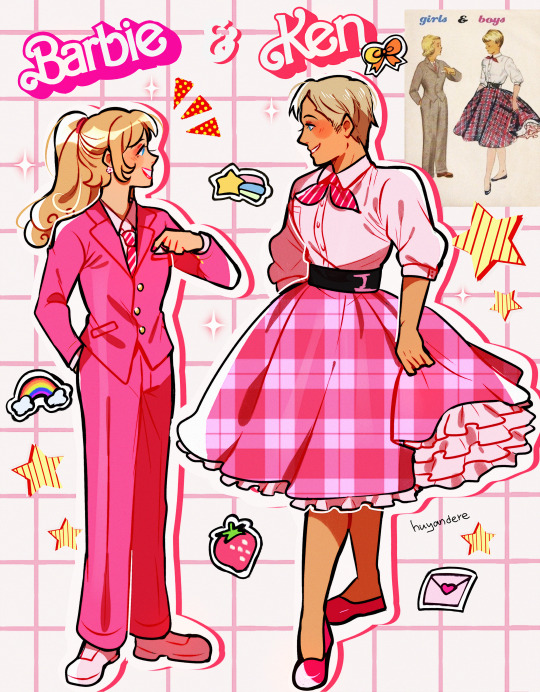
barbie day
127K notes
·
View notes
Text
"Gangleri began his questioning thus: 'Who is foremost, or oldest, of all the gods?' Hárr answered: 'He is called in our speech Allfather, but in the Elder Ásgard he had twelve names: one is Allfather; the second is Lord, or Lord of Hosts; the third is Nikarr, or Spear-Lord; the fourth is Nikudr, or Striker; the fifth is Knower of Many Things; the sixth, Fulfiller of Wishes; the seventh, Far-Speaking One; the eighth, The Shaker, or He that Putteth the Armies to Flight; the ninth, The Burner; the tenth, The Destroyer; the eleventh, The Protector; the twelfth, Gelding.'"
Gylfaginning, §: Concerning the Allfather, foremost of the gods (Snorri’s Prose Edda)
#kennings#eddas#norse paganism#odin#paganism#norse gods#norse mythology#deities#heathenry#norse polytheism#spirituality#quotes#polytheism
42 notes
·
View notes
Text

☆ - ̗̀✨ He's just Ken ✨ ̖́- ☆
#barbie movie#the barbie movie#ryan gosling#barbie 2023#barbie#ken#barbie ken#my art#ANYWHERE ELSE... HE'D BE A TEN...
129K notes
·
View notes
Text

do you guys ever think about dying? ✨
95K notes
·
View notes
Text
The Barbie movie reminded me about how when I was little my parents were upset that I kept making my Barbie dolls kiss, so they bought me a Ken doll. The next day they found me having a funeral for poor Ken in the garden, he had died of tuberculosis. All the Barbies were in attendance and I buried him under our rose bush. The Barbies were too poor to afford a headstone (it was 1875) so I didn’t mark where the grave was and I never could find him again. He’s probably still there.
#barbie movie#barbie#feminism#ken#ken doll#i’m just ken#my writing#true story#ryan gosling#barbie dolls#greta gerwig#margot robbie#oppenheimer#barbenheimer#if you ever find a Ken doll wrapped in toilet paper that’s mine sorry
81K notes
·
View notes

